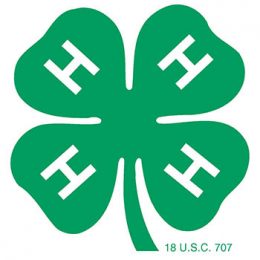(This article originally was printed in the October 1998 issue of Electric Consumer.)

Native Hoosier Derek Dye provides comic relief as Mr. Met, the nice-guy mascot of the New York Mets.
Photo contributed by the New York Mets
New Yorkers reputedly are a surly sort. But the old sayings about not judging books by their covers and nice guys finishing last sure don’t apply — at least when it comes to their baseball mascot.
“Mr. Met is the nicest character in Major League baseball,” said Derek Dye, mascot coordinator for the New York Mets.
Part of Mr. Met’s lovable demeanor comes from design. How else could a mascot behave when he’s got a goofy-looking face sculpted into a giant beachball-sized baseball for a head?
And part of his kindness comes from decree. “Our owners hate that style of (in-your-face) mascoting,” Dye added, referring to some obnoxious mascots around the leagues. “They just wanted this nice, happy character.”
But probably the biggest part of Mr. Met’s personality comes from within. Beneath that New York cap and big fleece and foam coconut, Mr. Met is a Hoosier at heart. That Hoosier is Dye himself.
Dye, who has played the part of Mr. Met this season, is a 23-year-old rural Cloverdale native. His family still lives there on a farm which is served electrically by Hendricks Power Cooperative.
Cloverdale may seem like a far cry from Shea Stadium where Mr. Met performs before crowds of sometimes 55,000. But since being called up to the Show, Dye has dished out a clownish, hammy sense of humor he started honing in high school. It’s a humor New York fans seem to appreciate.
Dye has energized and animated Mr. Met this season in a way the major-league’s first mascot has never been in his 34 years. Before Dye came along, Mr. Met just walked around with big fuzzy gloves and hugged people. Dye put Mr. Met into batting gloves to increase his dexterity and made him lovable and entertaining. Along with hugs and handshakes, Dye’s Mr. Met juggles bats and balls, rides a unicycle, dances on the dugout, leads cheers, walks on stilts and makes magic. “The unicycle got a great response,” Dye said. “The crowd just went wild because they’d never seen it before.”
Though much of Mr. Met’s antics are typical mascot shenanigans, Dye’s clowning and mascoting influences include two Hoosier sources: the great Red Skelton and Boomer, mascot of the Indiana Pacers pro basketball team. “I loved Red Skelton,” he said. “He was such a clean, honest person. He came across very sincere. My kind of humor is a very lovable, goofy kind of humor.”
Dye said he always wanted to be an entertainer. “I really didn’t care how I entertained.”
In high school, he sometimes was a sidekick to his best friend, a mascot at nearby Greencastle. He also took a clown class and started performing at local fairs, nursing homes and hospitals. In addition, the 1993 Cloverdale graduate acted in school plays. Later, he joined the Putnam County Playhouse but shied away from the leading roles.
“I was usually the comic relief,” he said. “You could focus all your attention in five or 10 minutes.” As Mr. Met, things haven’t changed too much. “I go on the field during an inning break and really ham it up for three minutes.”
After high school, Dye attended the Ringling Bros. and Barnum & Bailey Clown College in Baraboo, Wisconsin. He then worked as a clown and performer for the Cincinnati Zoo, Paramount’s Kings Island amusement park and the Indianapolis Indians minor-league baseball team. Last autumn, he attended a mascot school in Nashville. That’s when he heard about the opening in New York.
“The job’s been fun,” Dye said. As Mr. Met, he makes $30,000 a year (plus 50 percent of all outside appearance fees). He’s worked most of the home games for the Mets (a wild-card contender all season), traveled to other ball parks for “mascot days” and even made a Nike commercial.
For an anti-drug campaign in Atlanta, he and a bunch of other mascots led off a presidential press conference. “I can say I opened for President Clinton. That’ll look nice on a résumé,” he said. Then he paused. “… At least it would have.”
Mr. Met also accompanies Mets players to community events. Unlike some mascots, he’s not allowed to interact with them on the field. Dye said he doesn’t socialize too much with the players, either. (Some, he revealed, have heads bigger than Mr. Met’s!) Even though he cracks visual jokes, not homers, Mr. Met is just as much a favorite of the fans. “I get a huge line for autographs,” Dye said. He likes that intimate contact. Mr. Met can clown, do some goofy juggling or magic. “It’s not picking on someone. It’s just me entertaining.”
Still, the New York crowd has left a few scuff marks on Mr. Met. “I get a lot of blows to the head,” Dye said. “I’m like a huge punching bag, especially after the seventh inning.” That’s when fans who have had too many beers usually become rowdy. But Dye said he doesn’t think people are actually trying to hurt him, they just don’t realize Mr. Met’s head is chinstrapped to his. Two security guards now accompany Mr. Met through the grandstands.
Doubleheaders are even rowdier: “The second game is awful. You don’t have time to get to the people you really want to entertain for,” he said, “because it’s ‘bam, bam, bam.’”
Then there was bat day — when fans were given free bats. “I was petrified,” Dye said. Mr. Met’s head had to look like a mighty tempting target. “But nothing happened.” And when the crosstown Yankees came to Shea, he didn’t even go into the stands. “The Yankee fans would have killed me.”
Though Dye is grateful to the Mets for his opportunities this year, those “little town blues” Frank Sinatra sings about, blaring out of the Shea Stadium loud speakers, are hardly “melting away” for Dye and his wife, Jessi.
“I’m not a big fan of the New York lifestyle,” he said. “I was born and raised in Indiana. I like to say ‘hi’ to my neighbors. In Cloverdale if you didn’t wave to your neighbor you were shunned.”
Eventually, the newlyweds, married this summer in Cincinnati where they met a few years ago, would like to head back toward the Midwest. Even before interviewing for Mr. Met, Dye contacted the Cincinnati Reds about mascoting for them. He was told they already had a “mascot,” a slobbering St. Bernard. Dye said he’d love to convince the Reds to create a performing mascot like Mr. Met.
As for Mr. Met, he’s benefited, too, from Dye’s rookie season. Demand for personal appearances is way up as is Mr. Met’s popularity at the ball park. “I try to make him as energetic and animated as possible,” Dye said. Once, for instance, instead of using the gate, Mr. Met jumped over a short fence into the Shea Stadium picnic area. Mistaking Mr. Met’s exuberance for impudence, some teenagers commented, “He’s definitely a New Yorker.”
They’d be surprised to find out about Mr. Met. “He’s probably more of a Hoosier,” Dye said.
Richard G. Biever is senior editor of the Electric Consumer.



